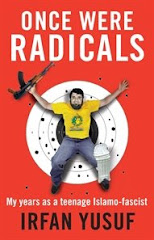Over the next few weeks, this blog will focus on certain academic writings which I have collected over the past 12 months on various topical issues relating to Muslims, democracy, multiculturalism, clash of civilisations and all those other catch phrases we have come to know and love (or loathe, depending on your perspective).
Each day (I hope!), parts of a particular study will be presented in summarised format. I’ll share some of my own thoughts, and readers are free to make their own observations.
Today I want to discuss an article by Timothy M Savage entitled Europe and Islam: Crescent Waxing, Cultures Clashing. This article was published in the Summer 2004 edition of The Washington Quarterly, a journal on international affairs published by the Center for Strategic & International Studies (CSIS).
Savage is a former US consul general in Leipzig, Germany and currently works at the Office of European Analysis at the US State Department. The article discusses what the author describes as the “Islamic challenge to Europe” which is two-fold.
Firstly, Europe must deal with its internal sphere. It must integrate a ghettoized and rapidly growing Muslim minority which many Europeans regard as encroaching upon the collective identity and public values of European society.
Second, Europe must develop a viable external approach to dealing with its primarily Muslim-populated volatile neighbours which are the focus of the EU’s recently adopted security strategy entitled “A Secure Europe in a Better World”. Linked to this is the EU’s New Neighbourhood initiative which defines a new framework for relations with 14 states or entities – Algeria, Israel, Egypt, Lebanon, Libya, Jordan, the Palestinian Authority, Morocco, Ukraine, Tunisia, Syria, Russia, Moldova and Belarus.
Savage’s basic thesis seems to be that Europe’s new interaction with both its external and internal manifestations with Islam “offers a range of opportunities for positive change in the world”. Savage laments that Europe is choosing to rely on its old ways as entrenched in its unimpressive “track record of engagement with Islam over the last 1,350 years”.
Savage laments that Europe’s current stance shows it prefers “caution, predictability, control, and established structures over the boldness, adaptability, engagement, and re-defined relationships that the new situation requires”.
As for Muslims in Europe, Savage believes that they by and large are showing a “similar mindset”. This situation is dangerous, especially as Europe’s Muslim communities are growing. US State Department figures from 2003 show that Muslims make up some 5% of Europe’s population, and number in excess of 23 million. If one were to include Turkey, this figure climbs to 90 million or 15% of the total. In the past 3 decades, the Muslim population has more than doubled.
Externally, the Middle East and North Africa (MENA) region has the world’s 2nd highest fertility rate. Meanwhile, Europe has the world’s lowest fertility rates. In the next 3 decades, the population of the MENA region is expected to double.
By 2050, Muslims are expected to comprise al least 20% of Europe’s population.
So what does all this mean? Here’s a few thoughts …
[01] The European situation is not akin to the situation in Australia or New Zealand. Europe’s Muslim communities tend to be ethnically and linguistically homogenous. Australian Muslims come from over 60 different nationalities.
[02] Many European countries have implemented policies that have fostered ethnic welfare ghettoes e.g. France. Though some limited ghettos are present in Sydney, they are far less than in Europe.
[03] Attempts to compare the experience of Europe with its Muslim minorities (the “Londonistan” thesis) are like comparing chalk with cheese.
[04] Europe’s Muslim communities are very young and will be dominated (as they are in Australia) by the children and grandchildren of migrants. Already, in France, some 15% of the 16-25 year age bracket is Muslim. Meanwhile in Brussels, 25% of the population under 25 is Muslim In this sense, there is some comparison between Australia and Europe.
[05] The understanding of faith of young European Muslims is perhaps less affected by Middle Eastern and other theological trends in the Muslim world. It is more affected by distinctly European factors.
[06] Muslim groups and institutions from overseas will have to reinvent themselves if they are to remain relevant to the emerging younger generations.
[07] Australian and North American Muslim youth can play a constructive role within Europe by building bridges with European Muslim youth and providing them with a different and more realistic understanding of how Muslim religiosity can be played out using Western cultural symbols. Integration is not just a possibility. It is an imperative.
That’s my view. Now it’s over to you.
© Irfan Yusuf 2007
Bookmark this on Delicious
Tuesday, February 13, 2007
COMMENT: Europe & Islam
Subscribe to:
Comments (Atom)









